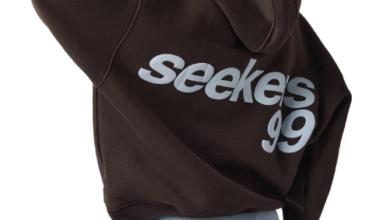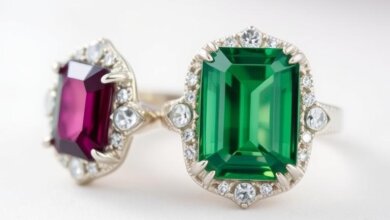What is the difference between dyed, metallic, and ceramic tints?

Window tinting has become increasingly popular among car owners, homeowners, and business owners alike. People invest in window films for a variety of reasons, including privacy, style, heat rejection, and protection from harmful UV rays. However, when it comes to choosing the right tint, many people feel confused due to the different types available in the market. Three of the most common window tint options are dyed tints, metallic tints, and ceramic tints.
Although they may look similar from the outside, each of these tints offers unique benefits, drawbacks, and performance levels. Understanding the differences between them is crucial in making an informed decision that matches your budget, lifestyle, and expectations.
In this article, we will explore what sets dyed, metallic, and ceramic window tints apart, their advantages, disadvantages, and which one might be the best choice for you.
1. What is Dyed Window Tint?
Dyed window tint is the most affordable and widely used type of tint film. It gets its name because the film is infused with dye that helps absorb sunlight and reduce glare. The dye is usually placed between an adhesive layer and a protective polyester top coating.
Key Characteristics of Dyed Tint:
-
Made using layers of dye to block sunlight.
-
Darkens windows for added privacy.
-
Provides a sleek, stylish appearance.
-
Primarily absorbs heat rather than reflecting it.
Advantages of Dyed Tint:
-
Cost-Effective: Dyed tint is usually the cheapest option, making it accessible for most car owners.
-
Aesthetic Appeal: It gives windows a darker, uniform look that enhances the vehicle’s appearance.
-
Glare Reduction: Helps reduce glare from the sun and headlights at night.
-
Privacy: Offers a decent level of privacy by limiting outside visibility.
Disadvantages of Dyed Tint:
-
Lower Heat Rejection: Compared to metallic and ceramic tints, dyed tint doesn’t block as much heat.
-
Fading Over Time: The dye may fade or turn purple after prolonged exposure to sunlight.
-
Shorter Lifespan: Typically lasts fewer years than other premium tints.
-
Limited UV Protection: Provides some UV blocking but not as effective as ceramic.
Dyed tint is ideal for those who want an affordable solution mainly for privacy and appearance rather than maximum performance.
2. What is Metallic Window Tint?
Metallic window tint, also known as metallized film, uses small metallic particles embedded within the film layers. These particles help reflect heat and UV rays rather than absorbing them, making it more effective than dyed tint.
Key Characteristics of Metallic Tint:
-
Contains metal microparticles for heat reflection.
-
Shiny, reflective finish that is noticeable.
-
More durable than dyed tint.
Advantages of Metallic Tint:
-
Superior Heat Rejection: Reflects solar energy efficiently, keeping the interior cooler.
-
Longer Lifespan: More durable and resistant to fading compared to dyed tints.
-
UV Protection: Provides better UV blocking, protecting passengers and interiors.
-
Scratch Resistance: Usually tougher and more resilient against wear.
Disadvantages of Metallic Tint:
-
Interference Issues: The metallic particles can interfere with radio signals, GPS, and cell phone reception.
-
Reflective Look: Some people don’t prefer its shiny, mirrored appearance.
-
Higher Cost: More expensive than dyed tint, though still cheaper than ceramic.
-
Legal Limitations: In some regions, reflective tints may not meet legal requirements.
Metallic tints are a good middle-ground for those who want better performance than dyed films but at a lower cost than ceramic.
3. What is Ceramic Window Tint?
Ceramic window tint is the most advanced and high-performing option available today. Instead of using dye or metal, ceramic tint is made with nano-ceramic technology. This involves tiny ceramic particles that are non-metallic and non-conductive but highly effective in blocking heat and UV rays.
Key Characteristics of Ceramic Tint:
-
Contains nano-ceramic particles.
-
Doesn’t interfere with signals or electronics.
-
High clarity with minimal glare distortion.
Advantages of Ceramic Tint:
-
Best Heat Rejection: Blocks up to 50–70% of solar heat, keeping interiors significantly cooler.
-
Exceptional UV Protection: Can block over 99% of harmful UV rays.
-
No Signal Interference: Unlike metallic tints, it doesn’t block cell phones, radios, or GPS.
-
Durability: Extremely long-lasting without fading or bubbling.
-
Improved Safety: The film strengthens windows, making them more resistant to shattering.
-
Enhanced Comfort: Maintains visibility while reducing glare and heat.
Disadvantages of Ceramic Tint:
-
High Cost: Ceramic tint is the most expensive option.
-
Professional Installation Required: Needs skilled technicians to ensure proper application.
Ceramic tint is the best choice for those who prioritize quality, comfort, and long-term performance, even though it comes at a premium price.
4. Dyed vs. Metallic vs. Ceramic: Direct Comparison
To better understand the differences, let’s compare the three side by side:
| Feature | Dyed Tint | Metallic Tint | Ceramic Tint |
|---|---|---|---|
| Heat Rejection | Low | Medium | High |
| UV Protection | Moderate | High | Excellent (99%+) |
| Durability | Short lifespan | Longer lifespan | Longest lifespan |
| Appearance | Dark matte look | Reflective/shiny | Clear, high-quality |
| Signal Interference | No | Yes | No |
| Cost | Low | Medium | High |
| Fading Over Time | Likely | Less likely | Unlikely |
| Privacy | Good | Good | Excellent |
5. Which Tint Should You Choose?
The right choice depends on your priorities, budget, and usage:
-
Choose Dyed Tint if:
You are looking for an affordable option mainly for appearance and privacy, and you don’t mind replacing the tint after a few years. -
Choose Metallic Tint if:
You want good heat rejection and durability at a mid-range price, but you are okay with potential signal interference and reflective looks. -
Choose Ceramic Tint if:
You want the highest level of performance, UV protection, and comfort without worrying about fading, interference, or long-term reliability.
6. Final Thoughts
Window tinting is more than just an aesthetic upgrade—it plays a major role in improving comfort, protecting interiors, and ensuring safety. Dyed, metallic, and ceramic tints all serve these purposes, but with varying levels of effectiveness.
-
Dyed tints are cost-effective and stylish but less durable.
-
Metallic tints strike a balance with good performance but come with signal interference issues.
-
Ceramic tints stand out as the premium choice, offering unmatched UV protection, heat rejection, and clarity.
Ultimately, your decision should align with your budget and what you value most—be it affordability, performance, or long-term quality. If you want the best investment for your vehicle or property, ceramic tint is hard to beat.




